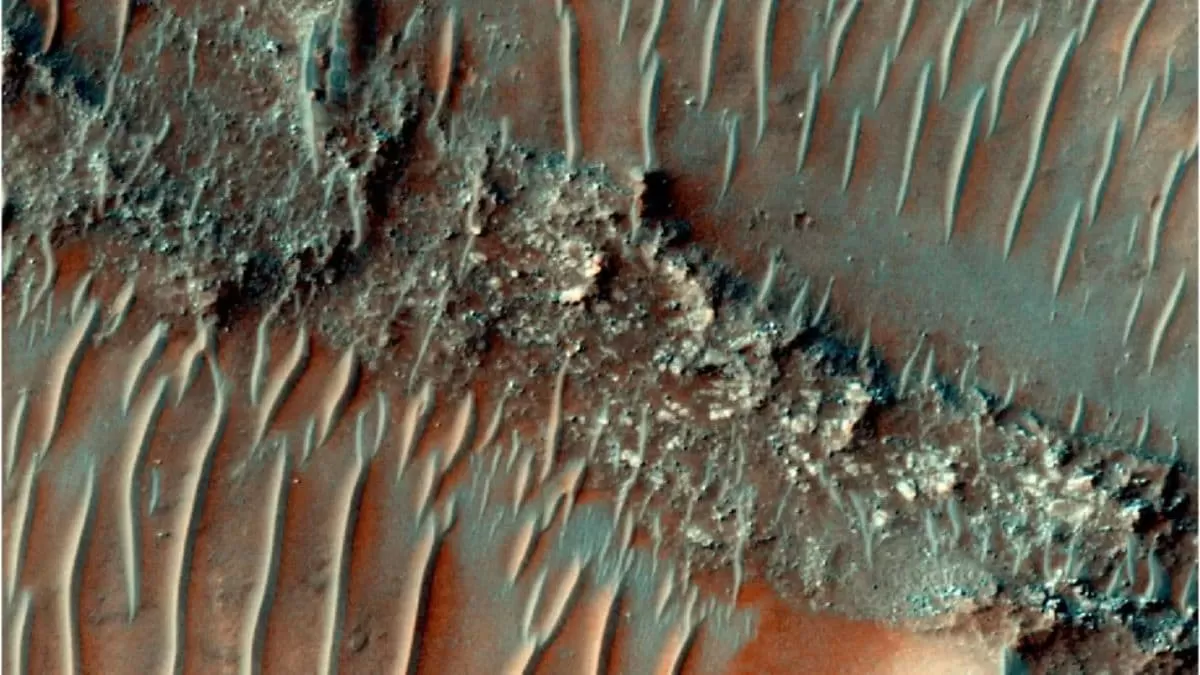The recent discovery that Mars once had Earth-like rainfall has sent shockwaves through the scientific community, reshaping our understanding of planetary evolution. This groundbreaking revelation not only sheds new light on the history of the Red Planet, but also supports the theory that early Mars was far more hospitable than previously believed. This opens up the possibility that Mars may have once been home to primitive life forms, a discovery that could have profound implications for our understanding of the universe and our place within it.
The findings, which were published in the journal Science, are the result of years of research and analysis of data collected by NASA’s Mars Reconnaissance Orbiter. The orbiter, which has been in orbit around Mars since 2006, has been instrumental in providing scientists with valuable insights into the planet’s geological history. However, it was the discovery of a mineral called jarosite that proved to be the key to unlocking this latest revelation.
Jarosite is a mineral that forms in the presence of water, and its presence on Mars has long been considered a strong indication that the planet once had a wetter, more Earth-like past. However, until now, the exact nature of this past has remained a mystery. The new research, led by scientists at the California Institute of Technology, has provided the missing piece of the puzzle by showing that the jarosite on Mars was formed by intense, short-lived rainstorms.
This is a significant finding because it challenges the prevailing belief that Mars has always been a cold, dry, and inhospitable planet. Instead, it suggests that early Mars may have had a much more dynamic and active climate, with a water cycle similar to that of Earth. This is a game-changer for our understanding of planetary evolution, as it means that Mars may have been capable of supporting life in its early stages.
The implications of this discovery are far-reaching and have the potential to guide future missions to Mars, such as NASA’s Perseverance rover, in their search for signs of life. Perseverance, which is set to land on Mars in February 2021, will be equipped with a suite of state-of-the-art instruments designed to detect and analyze organic molecules, the building blocks of life. With this new understanding of Mars’ past, scientists will be able to better target their search for these molecules and increase the chances of finding evidence of ancient life on the Red Planet.
But the significance of this discovery goes beyond just the search for life on Mars. It also has implications for our understanding of the potential habitability of other planets in our solar system and beyond. The fact that Mars, a planet once thought to be barren and inhospitable, may have once been capable of sustaining life is a powerful reminder of the vastness and diversity of our universe. It also raises the tantalizing possibility that life may have evolved independently on other planets, giving rise to a whole new realm of scientific inquiry.
Of course, there is still much we do not know about Mars and its past. The discovery of Earth-like rainfall is just one piece of a complex puzzle that scientists are still piecing together. But this latest revelation is a significant step forward in our understanding of the Red Planet, and it is a testament to the power of scientific exploration and discovery.
As we continue to unravel the mysteries of Mars, we must also remember the importance of preserving this planet for future generations. The potential for finding evidence of ancient life on Mars is a reminder of the fragility and preciousness of life, and it is our responsibility to protect and preserve it wherever we find it. This discovery is a reminder of the potential for scientific exploration to not only expand our knowledge but also inspire us to take better care of our own planet.
In conclusion, the revelation that Mars once had Earth-like rainfall is a groundbreaking discovery that has reshaped our understanding of planetary evolution. It provides strong evidence that Mars may have once been a far more hospitable place, capable of supporting primitive life forms. This discovery has the potential to guide future missions to Mars and has profound implications for our understanding of the universe. It is a reminder of the power of scientific exploration and the endless possibilities that await us in the vast expanse of space.

